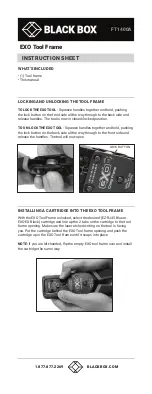
4
Parts & Service: 020 8988 7400 / E-mail: [email protected] or [email protected]
2. Screw a rivet onto the
mandrel until it is level with
the mandrel tip
3. Turn the sheath anti-
clockwise until the mandrel
nut touches the rivet.
4. Screw down the locking
ring so that it touches the
body of the rivet gun.
OPERATION
1. The hole diameter in the workpiece must be nominally larger than the
outer diameter of the rivet. Ensure the hole is perpendicular with the
surface of the workpiece components.
2. With the arms of the riveter open fully, insert the rivet nut into the hole in the
workpiece. Ensure that the riveter is perpendicular to the workpiece and
the flange of the rivet is pressed against it. Close the handles together to
compress the rivet nut.
3. Rotate the thumbwheel anticlockwise to unscrew the mandrel from the
installed rivet nut.
4. If the mandrel can not be easily removed from a rivet in this way, unscrew
the sheath leaving just the mandrel remaining in the rivet and use a rod
inserted through the hole in the mandrel to twist it anticlockwise to release
it from the rivet.
CHANGING MANDRELS
1. Use the spanner if necessary, to remove the mandrel nut, followed by the
sheath and its washer.
2. Slide the spring-loaded sleeve down to expose the hex shank so that the
mandrel can now be unscrewed from it.
3. If necessary, use a suitable rod passed through the hole in the mandrel to
undo it (anticlockwise). Hold the hex shank with a suitable spanner.
4. Replace with the new mandrel while the sleeve is held back. When the
mandrel is fully home, release the sleeve which will spring up and stop the
mandrel from turning.
5. Refit the sheath, washer & mandrel nut, ensure they are all tight before use.






















